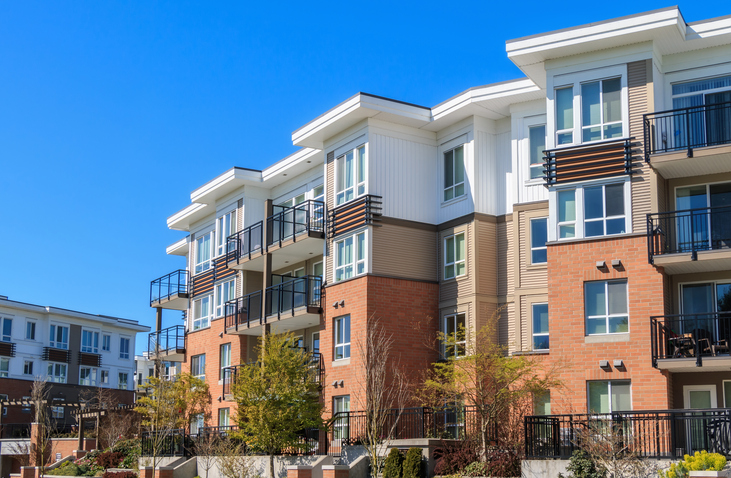Habitational Hot Mess
The habitational market struggles with a lack of capacity, increasing non-renewals, higher deductibles and restricted underwriting. How can the industry adapt to this hard market? This article covers current habitational risks in the multi-family market and offers tips for agents trying to place coverage.
|
Confirmed! We Face a Multi-Family Market Meltdown. It seems the habitational market is always hit fast and furious. Following catastrophic losses like 9/11 or 2022’s billions of dollars of underwriting losses, insurance companies have a restricted amount of coverage to allocate—in other words, they have a lack of capacity. The 2022 underwriting losses stem from catastrophic weather events, economic inflation, supply chain constraints, historic reinsurance increases and legal system abuse. As a result, insurers do not want to use their limited capacity on anything but “hot”- looking properties. Why Insurers are Shying Away from Habitational Risks Why don’t the insurers want to use their capacity on multi-family properties? First, lengthy property schedules often require tens of millions of dollars of building limits, making underwriters hot under the collar. Too many buildings mean too many roofs at one location in high-wind zones. Another exposure for severe claims is blazing hot fires from a single unit that spreads to multiple units. We know how extensive fire damage can be from unattended cooking, grilling, candles, appliances, or electrical systems. Imagine when a single residence’s fire devastates eight units. Also, water damage from failed plumbing or burst pipes is significant enough in one household. The claims get steamy when the water travels to multiple units. Finally, habitational accounts have poor overall performance “on an attritional basis,” reports CRC Group Wholesale & Specialty. In addition, where an insurer used to hold the first ten-to-twenty million dollars in-house, their capacity might now be half of that amount. Therefore, the insurer must purchase even more reinsurance. As reported on January 1, 2023, reinsurance costs increased the most we have seen in a generation. What are the Signs of a Troubled Habitational Market? The simmer comes to a boil when renewal pricing increases in the double digits. Next comes the overnight appetite changes. Risk acceptance reduces to ten or fifteen buildings. Roofs must be under ten-to-fifteen years old, and some carriers force actual cash value payments for roofs over fifteen years old. And, of course, the wind and hail deductibles are scorching high at 2%, 3%, and 5% of building limits. Older properties are no longer hot commodities, and they are not getting any younger. To top it off, several carriers went on a habitational nonrenewal frenzy. What will happen next? This crisis is not isolated to particular states or regions. In April 2023, Community Associations Institute’s Foundation for Community Association Research conducted a national survey of board members, property managers, and insurance professionals. The survey can be found at https://foundation.caionline.org/wp-content/uploads/2023/04/4ppInsuranceSnapSurvey.pdf. There were nearly a thousand respondents, and some of the results are below.
The March to Surplus Lines The non-renewals force many communities into the Excess and Surplus Lines (E&S) markets. These changes are due to the building’s age, claims history, Zinsco panels, or Federal Pacific Stab Lok electrical panels, or aluminum wiring in the units. Aluminum wiring is too hot for today’s standard markets to handle. Agents should be wary of properties built in the mid-1960s through the early 1980s. Corrosion of the metals in the connection, particularly the aluminum wiring itself, causes increased resistance leading to overheating. Perhaps the client will cool down when they learn the AlumiConn method of aluminum wiring repairs could reduce premiums 20-25%. The E&S market prices will shock the habitational client typically with double-to-triple the expiring premiums and less coverage. Be careful to watch for the following property coverage restrictions in the E&S market for any of the habitational clients, especially on extensive schedules of wood frame buildings.
Tips to Help Place Coverage Finding replacement coverage can be challenging whether the property qualifies for the standard or E&S market. Get ready to work in this messy market. Only a few insurers are prepared to take on these accounts, so put your best foot forward using the following tips.
What Should Agents Do Next? We ride out this firestorm. Current conditions leave insurers vulnerable when relying on probabilistic modeling. Forward-looking carriers might use modeling, which engages scientists to include climate change. Perhaps, other solutions include some consumer skin in the game. Stricter building codes proved worthy during Hurricane Ian. Instead of recommending them, carriers may begin to mandate risk reduction measures, such as water-detection systems or under-the-hood fire suppression devices. Meanwhile, according to Verisk, the industry has a $27 billion dollar net underwriting loss, which is six times the 2021 loss. In addition, hazard-prone areas have attracted denser populations and affluent lifestyle accommodations, which directly impacts the increased cost of historical-type claims, not to mention exacerbating the effects of climate change. When loss exposures are rapidly growing, but insurance availability is diminishing, this is a perfect hot mess. So, stop, drop, and roll with the punches. Karen Corrigan is a St. Louis-based agent who specializes in condominium coverage. She is also the Chair of the Big I Technical Affairs Committee, which works with ISO to improve policy language. Last Updated: June 2, 2023 |
Copyright © 2025, Big “I” Virtual University. All rights reserved. No part of this material may be used or reproduced in any manner without the prior written permission from Big “I” Virtual University. For further information, contact nancy.germond@iiaba.net.









